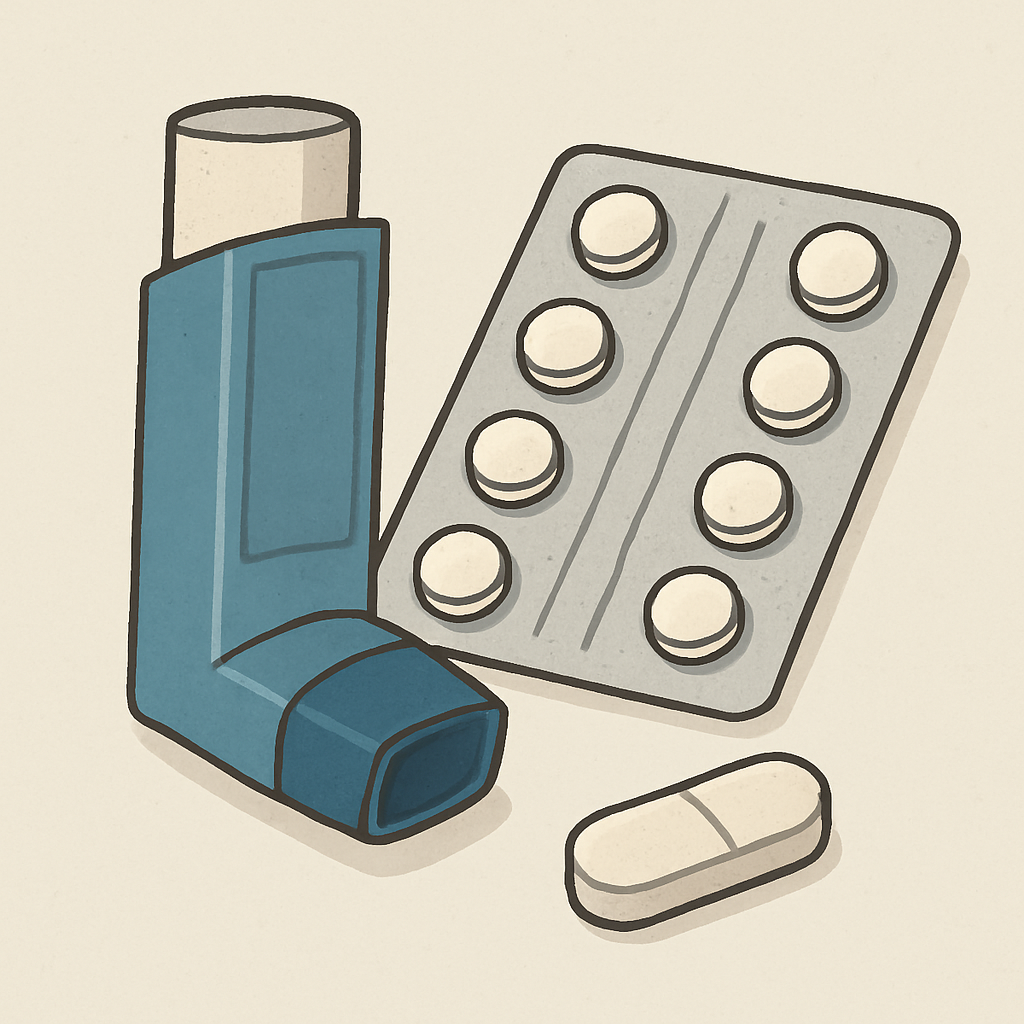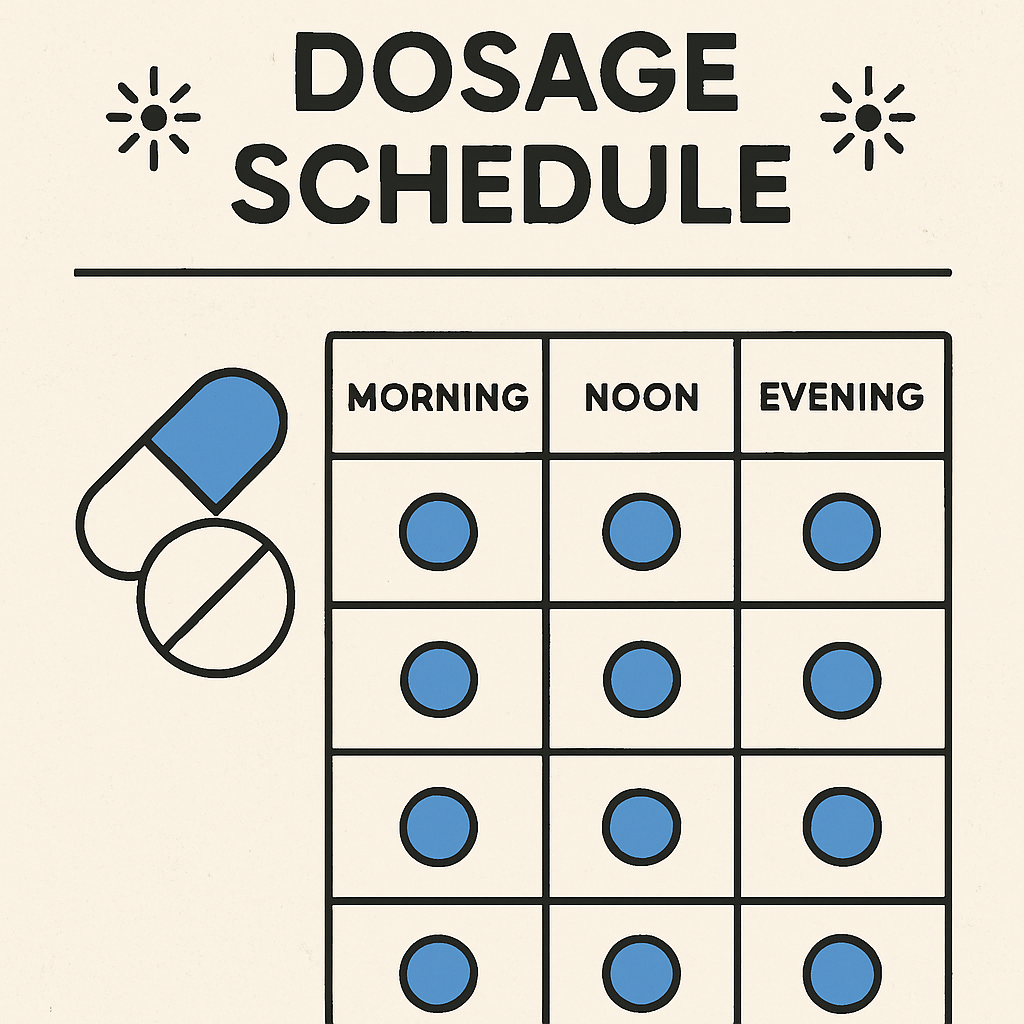
The combination of Budesonide, Formoterol, and Glycopyrrolate merges three different types of medication, each playing a crucial role in managing chronic bronchitis and other respiratory diseases. Understanding each component’s function can help patients appreciate how the medication improves their breathing and overall health.
Budesonide
Budesonide is a corticosteroid that plays a crucial role in reducing inflammation in the airways. Inflammation is a common issue in respiratory conditions, leading to symptoms such as wheezing and shortness of breath. By decreasing inflammation, Budesonide helps prevent these symptoms from occurring. It’s important to note that Budesonide is not a quick-relief medication but rather works over time to improve lung function.
Formoterol
Formoterol is a long-acting beta-agonist (LABA) that helps relax muscles around the airways, allowing them to open up and make breathing easier. This action is particularly beneficial in preventing asthma attacks and managing chronic obstructive pulmonary disease (COPD). It’s important to note that Formoterol should be used regularly as prescribed and not as a rescue medication for sudden breathing problems. Consistent use can help maintain open airways and reduce the frequency of asthma attacks.
Glycopyrrolate
Glycopyrrolate is an anticholinergic that helps prevent airway constriction. By blocking certain nerve signals, Glycopyrrolate helps keep the airways open and reduces the risk of bronchospasm. This component is particularly useful for patients who experience frequent bronchospasms, as it works to maintain open airways and improve breathing over time. Glycopyrrolate is an important part of the combination therapy, providing long-term relief from chronic bronchitis symptoms.
Recommended Dosage for Adults

The dosage for Budesonide Formoterol Glycopyrrolate is generally determined by a healthcare provider based on the severity of the condition and the patient’s response to treatment. Proper dosage is key to ensuring the medication’s effectiveness and minimizing side effects.
Initial Dosage
For adults with chronic bronchitis, the initial dosage often starts at two inhalations of the combination inhaler twice daily, typically in the morning and evening. This consistent schedule helps maintain the drug’s efficacy in managing symptoms throughout the day. The morning and evening doses work together to provide round-the-clock symptom control, preventing flare-ups and maintaining lung function. It’s crucial to adhere to this regimen to achieve optimal results.
Maintenance Dosage
After assessing the patient’s response to the initial dosage, healthcare providers may adjust the maintenance dosage. Some patients may require a higher dose if symptoms are not adequately controlled, while others may be stable on a lower dose. Regular follow-ups with a healthcare provider are essential to determine the most effective maintenance dose. Adjustments may also be needed if there are changes in the patient’s condition or if they experience any side effects.
Importance of Adherence
Adherence to the prescribed dosage is critical to the success of the treatment. Skipping doses or incorrect use of the inhaler can lead to suboptimal results and may exacerbate symptoms. Educating patients on the importance of following the dosage schedule can help improve treatment outcomes. Healthcare providers should emphasize the need for adherence and provide strategies to help patients remember to take their medication as prescribed.
Dosage Adjustments
Dosage adjustments may be necessary for certain populations or in specific situations. Understanding when and how to adjust the dosage can help prevent complications and ensure the effectiveness of the treatment.
Special Populations
Certain groups, such as older adults or those with kidney or liver impairments, may require dosage adjustments. These patients may have different metabolic rates or sensitivities to the medication, necessitating careful monitoring. It’s crucial for these patients to follow their healthcare provider’s recommendations closely to avoid potential side effects or complications. Regular assessments can help determine if the dosage needs to be adjusted based on the patient’s response.
Missed Doses
If a dose is missed, it should be taken as soon as remembered, unless it is close to the time for the next scheduled dose. In such cases, the missed dose should be skipped to avoid doubling up. Patients should not take extra doses to make up for a missed one. Establishing a routine or setting reminders can help prevent missed doses and maintain the effectiveness of the treatment.
Overdose
In the event of an overdose, medical attention should be sought immediately. Symptoms of overdose may include chest pain, fast or irregular heartbeat, severe headache, tremors, or seizures. Recognizing these symptoms early and seeking prompt medical help can prevent serious complications. Patients and caregivers should be educated on the signs of overdose and the importance of seeking emergency care if they occur.
Proper Use of the Inhaler

by CNordic Nordic (https://unsplash.com/@cnordic)
Using the inhaler correctly is vital to ensure the medication is delivered effectively to the lungs. Proper technique can significantly impact the medication’s efficacy and the patient’s overall treatment experience.
Preparing the Inhaler
- Shake the Inhaler: Before using, shake the inhaler well to mix the medication evenly. This ensures that each dose contains the correct amount of medication. A well-shaken inhaler can deliver the medication more effectively to the lungs.
- Prime the Inhaler: If using the inhaler for the first time or after a long period of non-use, prime it according to the instructions provided. Priming helps ensure that the inhaler delivers the correct dose with each use. Follow the specific priming instructions provided by the manufacturer to maintain the inhaler’s effectiveness.
Using the Inhaler
- Breathe Out: Exhale fully to empty the lungs before taking the medication. This step prepares the lungs to receive the full dose of medication. Proper exhalation can enhance the delivery and absorption of the medication in the lungs.
- Inhale Medication: Place the mouthpiece in your mouth and inhale deeply and slowly while pressing down on the canister to release the medication. Coordinating the inhalation with the release of the medication is key to effective delivery. Practice and proper technique can improve the consistency and effectiveness of each dose.
- Hold Breath: After inhaling, hold your breath for about 10 seconds to allow the medication to settle in your lungs. This step maximizes the medication’s contact with the lung tissues, enhancing its effectiveness. Holding your breath also helps ensure that the medication is fully absorbed before exhaling.
Post-Inhalation Care
- Rinse Mouth: After using the inhaler, rinse your mouth with water to minimize the risk of oral thrush, a possible side effect of Budesonide. Rinsing helps remove any residual medication from the mouth, reducing the risk of side effects. This simple step is an important part of maintaining oral health while using the medication.
Potential Side Effects and Precautions
While Budesonide Formoterol Glycopyrrolate is effective for many patients, it’s essential to be aware of potential side effects and take necessary precautions. Understanding the risks can help patients manage side effects and improve their treatment experience.
Common Side Effects
Some common side effects may include cough, dry mouth, hoarseness, and throat irritation. These side effects are generally mild and may decrease over time as the body adjusts to the medication. Patients should report any persistent or bothersome side effects to their healthcare provider. Simple remedies, such as staying hydrated, may help alleviate some of these symptoms.
Serious Side Effects
Serious side effects may include increased heart rate, high blood pressure, and allergic reactions such as rash, itching, or swelling. If any serious side effects occur, medical attention should be sought immediately. Early recognition and prompt treatment of serious side effects can prevent complications and improve patient safety. Patients should be educated on the signs of serious side effects and the importance of seeking immediate care if they occur.
Precautions
To maximize the effectiveness of the treatment and minimize risks, certain precautions should be taken:
- Avoid Smoking: Smoking can worsen respiratory conditions and reduce the effectiveness of the medication. Patients should be encouraged to quit smoking and avoid exposure to secondhand smoke. Smoking cessation support may be beneficial for patients who smoke.
- Regular Check-Ups: Regular follow-up appointments with a healthcare provider are crucial to monitor the condition and make any necessary adjustments to the treatment plan. Ongoing assessments can help ensure that the treatment remains effective and safe. Patients should communicate any changes in symptoms or side effects to their healthcare provider during these visits.
- Inform Healthcare Providers: Always inform healthcare providers of all medications being taken to avoid potential drug interactions. Providing a complete medication list can help prevent adverse interactions and ensure coordinated care. Patients should also inform their provider of any changes in their health status or new medications they are taking.
Conclusion
Budesonide Formoterol Glycopyrrolate offers a comprehensive approach to managing chronic bronchitis, combining anti-inflammatory, bronchodilator, and anticholinergic effects. By following the dosage guidelines and using the inhaler correctly, patients can experience significant improvements in their symptoms and quality of life.
Always consult with a healthcare provider before making any changes to the medication regimen, and ensure regular monitoring to address any concerns promptly. With the right approach and adherence to prescribed treatment, managing chronic bronchitis can become a more manageable task. Taking an active role in their treatment can help patients achieve better outcomes and maintain their respiratory health.


